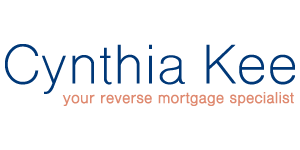The New Math of Reverse Mortgages for Retirees
The New Math of Reverse Mortgages for Retirees
Home equity conversion mortgages, commonly known as HECMs, insured by the Federal Housing Administration and overseen by the Department of Housing and Urban Development, offer protections to borrowers that include: limits on how much borrowers can obtain, so seniors don’t opt for large lump-sum distributions they cannot afford; protection from default if the value of the home declines to less than the loan amount; and provisions that secure a surviving spouse’s right to remain in the home after the borrower’s death.
For seniors who are concerned about outliving their savings and who want to remain in their homes, a HECM “may be a product to consider,” says Wade Pfau, a professor at the American College. “It’s a way to free up money to pay for long-term care, and other unexpected living expenses,” he says. Dr. Pfau notes another benefit as well: The funds disbursed aren’t taxed since they are considered a loan advance, unlike other retirement income such as distributions from an IRA or 401(k).
Reverse mortgages, maligned for years as loans of last resort for struggling seniors, have gotten a makeover. For decades the industry’s image was tainted by horror stories about borrowers who faced foreclosure, and surviving spouses who were evicted. But today, these products—introduced in 1961—have evolved into tools that, with federal insurance and oversight, often do what was originally intended: ease financial burdens for retired homeowners with limited incomes who want to stay in their homes until death.
Many of the negatives have been addressed with federal insurance and oversight. At the least, they’re worth considering for people who are cash poor and house rich.
Perks & Protections
If the borrower chooses a payment plan with an adjustable interest rate, pegged to the U.S. Constant Maturity Treasury Index, then as disbursements are made, the untouched amount can continue to grow at that variable interest rate. With this option the loan can be received as a line of credit, allowing the borrower to tap into it for distributions only when desired; or as tenure (which comes in monthly payments for the life of the loan); monthly payments for another specified term; or a combination of these options. (The recipient can also choose to change his or her payment plan to another available option at any time, provided funds are available.)
If the borrower prefers the fixed-rate option for the loan instead, which can be beneficial when interest rates are rising, only a lump-sum disbursement option is available. HECMs seek to reduce this risk by limiting the amount that can be borrowed. The maximum amount of home equity that can be borrowed against was raised this year to $970,800 from $822,375 in 2021. The FHA also performs financial assessments of loan applicants to guard against defaults.
Another safeguard is protection against declines in a home’s value. “The FHA covers any shortfalls between the final loan balance and the net proceeds from the sale so you never have to worry about being ‘underwater’ on the loan if the value of your home drops,” says Prof. Salter. “That’s because HECMs are non-recourse loans so homeowners don’t have to pay back any balance that is more than the value of their home,” says Steve Irwin, president of the NRMLA. So if a person took out a $100,000 HECM and the home value sank to $95,000 when the borrower died, the estate could sell the home and use the proceeds to pay back the loan balance and the FHA insurance would cover the remaining amount.”
With all reverse mortgages, borrowers never give up title, or ownership of the property until they die, move out of the house, or do not maintain their homeowner obligations. In addition, under HUD’S HECM program the federal guidelines say that under certain conditions the surviving spouse of a borrower can continue to live in the home as long as they keep it as a principal residence, don’t move out for 12 months, and stay current on paying taxes and insurance. This is true even when the spouse isn’t a borrower, as long as they were married to the borrower when the reverse mortgage was done, maintain the home as a principal residence, and continue to stay current on paying taxes and insurance, according to the NRMLA.
Who Qualifies for a Reverse?
To qualify for a HECM, borrowers must be 62 or older, own and occupy the property as a principal residence, and have the financial wherewithal to pay expenses arising from the home such as property taxes, insurance, and homeowner association fees.
HECMs are only available through an FHA-approved lender. Borrowers are required to buy FHA mortgage insurance and attend an information session with a HUD-approved counselor.
The amount available to borrow, called the “principal limit,” depends on such factors as the appraised value of the property up to the FHA loan limit, how much is owed, the borrower’s age, and current interest rates.
Contact Cynthia today to see if you qualify!
Reverse mortgages can be used in a number of ways. Below are a few scenarios in which Cynthia has helped client’s add to their financial freedom:
Added an additional “tax-free” monthly income source.
Eliminated mortgage payment, all credit card debts, and provided a line of credit to draw from in case of emergencies.
Removed the worry of ever having to sell or leave their forever home.
Retired early, allowing for more time spent with family and loved ones.
Downsized to a manageable new home with less maintenance.



